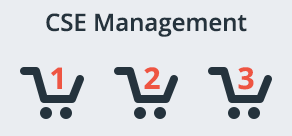The Comparison Shopping Guide for Online Merchants: Part 1

You’re an e-commerce retailer with the goal of maximizing revenues and minimizing expenses. One way to do this is through your comparison shopping campaigns. This series will teach you how to launch your campaigns as well as how to optimize them through effective and strategic management.
This is the 1st part of a series of 7.
Part 1: What Are Comparison Shopping Engines And What Can I Do With Them?
Part 2: What Are The Best Comparison Shopping Engines And Why?
Part 3: How Does Comparison Shopping Bidding Work And How Do I Manage My Bids?
Part 4: What Are Each Comparison Shopping Engine’s Bidding Tricks And Best Practices?
Part 5: What’s A Data Feed, How Do I Create One, And How Do I Optimize It?
Part 6: How Do I Increase The ROI From My Comparison Shopping Campaigns?
Part 7: Long Term Maintenance: How Do I Create Profitable Comparison Shopping Campaigns Each Year?

Successful comparison shopping campaigns are essential to an e-commerce retailer’s growth in website traffic, conversions, and overall revenues. This all sounds great if you’re a budding retailer trying to bolster your company’s internet presence, but comparison shopping engines aren’t for everyone. Here are a couple things to consider if you’re thinking about starting or expanding your comparison shopping campaigns:
The majority of CSEs are paid. In the world of comparison shopping, there are CPC and CPA campaigns. The former, cost per click, requires that a retailer pay each time an online consumer clicks on their featured product. The issue with CPC campaigns is that it requires management in order to promote cost-effective conversions. On the other hand, cost per acquisition is a more relaxed campaign style. Here, a retailer is charged a percentage of each sale for being featured on a CSE and so it requires no management, besides fulfilling the orders.
However, the reality is that the majority of major CSEs are CPC. Your budget will depend on how many products you have and how many CSE campaigns you’re managing. Ideally, you’d like to be on 4 or 5 of the major CSEs, and it is recommended that you have a budget of about $2000-3000 per month, which will go towards paying for clicks alone.
Other than money, you will also be spending a good amount of time managing your CSE campaigns because, quite frankly, CPC management can be tedious. In order to effectively manage your CPC campaigns on CSEs, you will need to visit each campaign at least once a week. Obviously, the more products you have the more managing you will have to do. Your time managing CPC campaigns will be spent optimizing your product bids, meaning the removal or lowering of under-performing products and potentially raising high-selling products.
The bidding process will be explained in Chapter 2 of the series. Management will also consist of updating you inventory and data feed information whenever the product data on your site changes. Note: If you’re a retailer that is starting his/her CSE campaigns with an absolutely needed ROI ratio, you may have to cut a lot of fat from the products you list on CSEs (a.k.a. getting rid of the poorly-converting products).
Unfortunately, many times this will limit your sales and revenue potential. If you’re one of these retailers, determine if you have the manpower and expertise to reach your desired ROI beforestarting your CSE campaigns.
Generally speaking, you want to have a lot of products if you’re considering starting or expanding your CSE campaigns. Product volume can be a good measure of how far along your e-commerce business is, and so it can indicate if you have the budget and manpower to handle CSE campaigns. However, you should have at least around 500 products, but this depends on the category your products lie in.
If you have generally higher Average Order Volume (AOV) products that are also in a popular category like electronics, you don’t have to worry so much about having a lot of products because the search volume for your products will be high.
Note: Comparison shopping engines are great for your online retail business in terms of generating more traffic to your website and eventually boosting revenues, but there is buried gold in the remarketing potential they add to your business. Before launching on CSEs or at least immediately after doing so, optimize your remarketing strategy so you can keep customers coming back for your business. For a few tips, check out some of these remarketing strategies.
